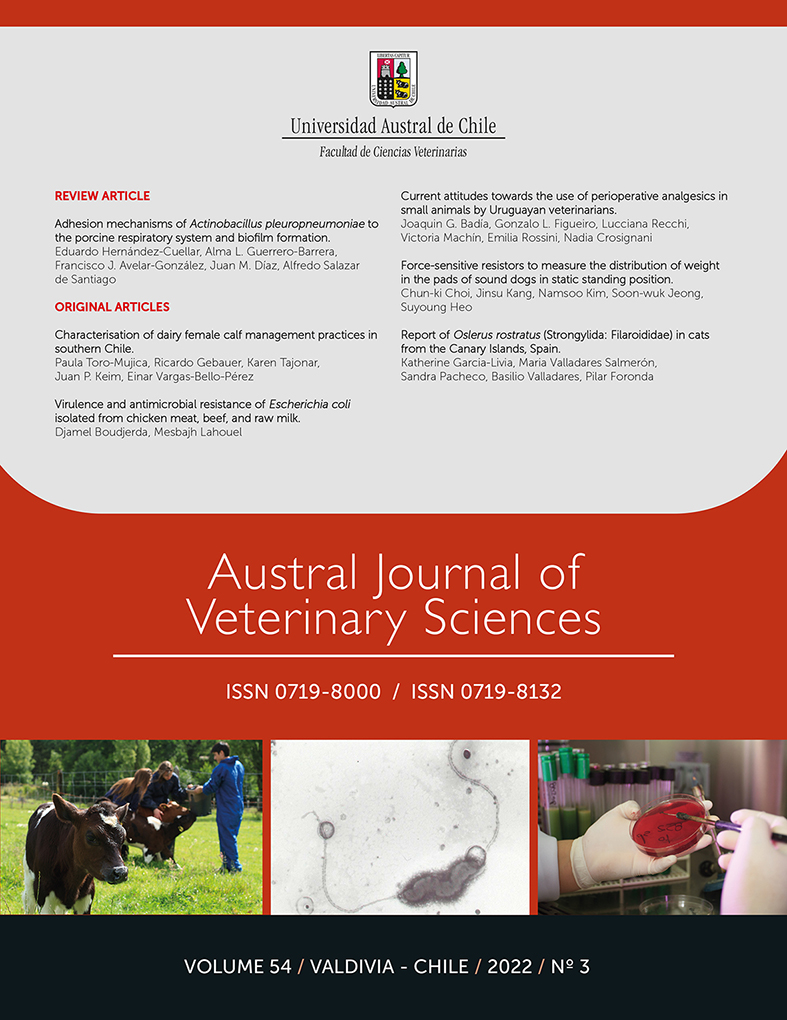Current attitudes towards the use of perioperative analgesics in small animals by Uruguayan veterinarians
Conteúdo do artigo principal
Resumo
In recent decades, several articles have reported significant progress regarding pain treatment in veterinary medicine. This study aims to analyse the attitudes of veterinarians working in small animal practices in Uruguay towards the use of analgesics during the perioperative period. Veterinarians in charge of clinics performing surgeries were interviewed, including clinics located in the capital city, Montevideo (n=59) and the rest of the country (n=81), based on data obtained from the National Veterinary Census in 2010. Most interviews were conducted in person, and if not possible, they were carried out through video calls. According to gender, 54% of interviewees were women and 46% were men, with 95% of them practising in urban areas. The most used drugs were nonsteroidal anti-inflammatory drugs (NSAIDs), with dipyrone (89%) being the most popular. Amongst opioids, pure agonists presented minimal inclusion in analgesic treatment (13%), with tramadol (93%) being the most used opioid. Drugs belonging to other groups were less mentioned. Thirty-eight per cent of the respondents considered that their training in pain management was inadequate. Veterinarians categorised the intensity of pain caused by several surgical procedures as “severe”, however, they used weak opioids such as tramadol or NSAIDs as a single therapy to treat most cases. The scarce use of analgesic drugs and techniques that provide profound analgesia (such as mu-opioid receptor agonists) by Uruguayan veterinarians reveals the need for open discussion, adjustment of attitudes and continuing education on pain management.

